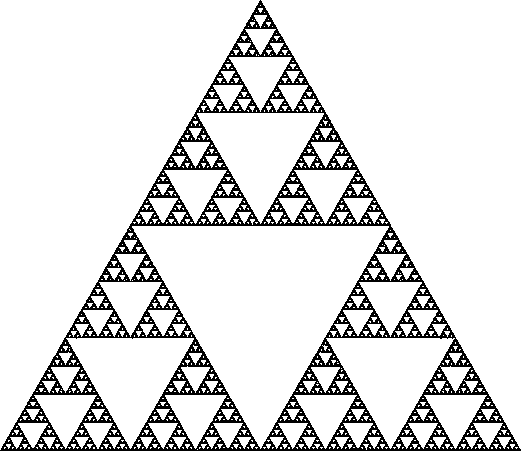Sierpinski triangle

The Sierpinski triangle, also called the Sierpinski gasket or the Sierpinski Sieve, is a fractal and attractive fixed set with the overall shape of an equilateral triangle, subdivided recursively into smaller equilateral triangles. Originally constructed as a curve, this is one of the basic examples of self-similar sets, i.e., it is a mathematically generated pattern that can be reproducible at any magnification or reduction. [Source: Wikipedia].
Which is the area of the Sierpinski triangle?
The answer is 0.
This section requires Javascript.
You are seeing this because something didn't load right. We suggest you, (a) try
refreshing the page, (b) enabling javascript if it is disabled on your browser and,
finally, (c)
loading the
non-javascript version of this page
. We're sorry about the hassle.
The n+1-esim triangle is made by 3 triangles obtained by scaling the n-esim one by 1/2: the area of the n+1 esim triangle is 3*(1/2)^2= 3/4 the area of the previous one. Iterating the process, the area of the n esim triangle is (0.75)^n times the area of the starting one. As n tends to infinity, this area tends to zero.